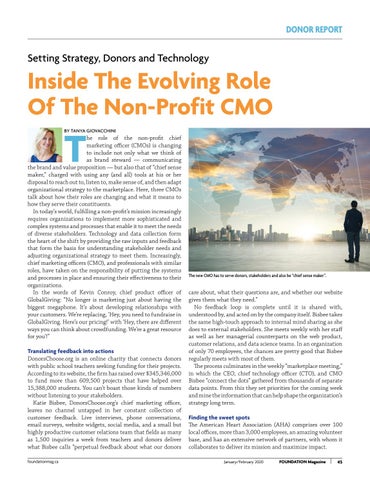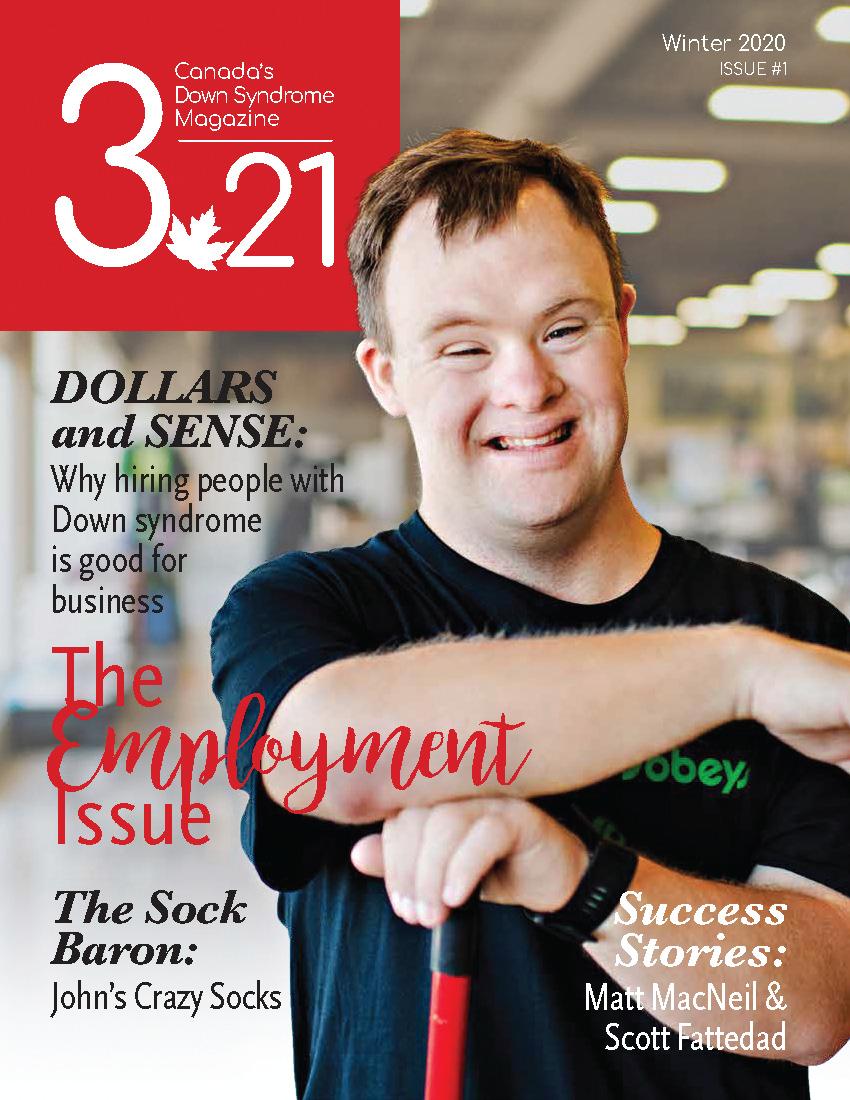DONOR REPORT
Setting Strategy, Donors and Technology
Inside The Evolving Role Of The Non-Profit CMO
T
By Tanya Giovacchini
he role of the non-profit chief marketing officer (CMOs) is changing to include not only what we think of as brand steward — communicating the brand and value proposition — but also that of “chief sense maker,” charged with using any (and all) tools at his or her disposal to reach out to, listen to, make sense of, and then adapt organizational strategy to the marketplace. Here, three CMOs talk about how their roles are changing and what it means to how they serve their constituents. In today’s world, fulfilling a non-profit’s mission increasingly requires organizations to implement more sophisticated and complex systems and processes that enable it to meet the needs of diverse stakeholders. Technology and data collection form the heart of the shift by providing the raw inputs and feedback that form the basis for understanding stakeholder needs and adjusting organizational strategy to meet them. Increasingly, chief marketing officers (CMO), and professionals with similar roles, have taken on the responsibility of putting the systems and processes in place and ensuring their effectiveness to their organizations. In the words of Kevin Conroy, chief product officer of GlobalGiving: “No longer is marketing just about having the biggest megaphone. It’s about developing relationships with your customers. We’re replacing, ‘Hey, you need to fundraise in GlobalGiving. Here’s our pricing!’ with ‘Hey, there are different ways you can think about crowdfunding. We’re a great resource for you’!” Translating feedback into actions DonorsChoose.org is an online charity that connects donors with public school teachers seeking funding for their projects. According to its website, the firm has raised over $345,346,000 to fund more than 609,500 projects that have helped over 15,388,000 students. You can’t boast those kinds of numbers without listening to your stakeholders. Katie Bisbee, DonorsChoose.org’s chief marketing officer, leaves no channel untapped in her constant collection of customer feedback. Live interviews, phone conversations, email surveys, website widgets, social media, and a small but highly productive customer relations team that fields as many as 1,500 inquiries a week from teachers and donors deliver what Bisbee calls “perpetual feedback about what our donors foundationmag.ca
The new CMO has to serve donors, stakeholders and also be “chief sense maker”.
care about, what their questions are, and whether our website gives them what they need.” No feedback loop is complete until it is shared with, understood by, and acted on by the company itself. Bisbee takes the same high-touch approach to internal mind sharing as she does to external stakeholders. She meets weekly with her staff as well as her managerial counterparts on the web product, customer relations, and data science teams. In an organization of only 70 employees, the chances are pretty good that Bisbee regularly meets with most of them. The process culminates in the weekly “marketplace meeting,” in which the CEO, chief technology officer (CTO), and CMO Bisbee “connect the dots” gathered from thousands of separate data points. From this they set priorities for the coming week and mine the information that can help shape the organization’s strategy long term. Finding the sweet spots The American Heart Association (AHA) comprises over 100 local offices, more than 3,000 employees, an amazing volunteer base, and has an extensive network of partners, with whom it collaborates to deliver its mission and maximize impact. January/February 2020
FOUNDATION Magazine
45















